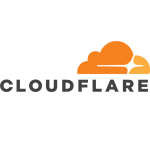What is our primary use case?
We are using Azure Active Directory (AD) for:
- Application authentication, which is single sign-on.
- Multi-factor authentication (MFA).
- Conditional access for people coming in from non-trusted networks, which are interlinked.
- Azure AD B2B.
These are the four big items that we are using.
How has it helped my organization?
The flexibility around accessing company systems from anywhere at any time has proven to be very helpful. Organizations decided during the COVID-19 pandemic, on a very short notice, to announce that everyone should be working from home. The good part was that our company was already working under Azure Active Directory, and most of our applications were under Azure at that time. For us, it was a very seamless transition. There were no major impacts on the migration nor did we have to do any special setups or need to configure networks. So, it was a very seamless experience for our users, who used to come into our office, to access systems. They started working from home and there was no difference for them. We did not have to do anything special to support that transition from working from the office to working from home. It was seamless. There was no impact to the end users.
Bringing our many hundreds of applications onto Azure Active Directory single sign-on authentication has had a big impact on users' productivity, usage, and adoption of enterprise applications because they don't need to log in. It is the same credentials and token being used for days and months when people use our systems with hundreds of applications being integrated. From a user perspective, it is quite a seamless experience. They don't need to remember their username, passwords, and other credential information because you are maintaining a single sign-on token. So, it is a big productivity enhancement. Before, we were not using a single sign-on for anything. Now, almost 90 to 95 percent of applications are on Azure Active Directory single sign-on.
What is most valuable?
The single sign-on is an amazing product. Its integration with the back-end, like MFA and conditional access, is very helpful for enterprise class companies because of changing dynamics as well as how companies and workers interact. Traditionally, companies used to have their own premises, networks, network-level VPN and proxy settings, and networks to access company systems. Now, anyone can work from anywhere within our company. We are a global company who works across more than 60 countries, so it is not always possible to have secure networks. So, we need to secure our applications and data without having a network parameter-level security.
Azure Active Directory provides us with identity-based authentication, which secures access at the user level and also integrates with conditional access policies and multi-factor authentication helping to increase the identity security for that person. So, the hacking and leaking of passwords is a secondary problem because you will not authenticate a person with one factor. There is a second factor of authentication available to increase the security premise for your company.
The analytics are very helpful. They give you very fine grain data around patterns of usage, such as, who is using it, sign-in attempts, or any failed logins. It also provides detailed analytics, like the amount of users who are using which applications. The application security features let you drill-down reports and generate reports based on the analytics produced via your Active Directory, which is very helpful. This can feed into security operation centers and other things.
What needs improvement?
One of the areas where Microsoft is very actively working on enhancing is the capabilities around the B2B and B2C areas.
Microsoft is actively pursuing and building new capabilities around identity governance.
There is a concept of cross-tenant trust relationships, which I believe Microsoft is actively pursuing. That is something which in the coming days and years to come by will be very key to the success of Azure Active Directory, because many organizations are going into mergers and acquisitions or spinning off new companies. They will still have to access the old tenant information because of multiple legal reasons, compliance reasons, and all those things. So, there should be some level of tenant-level trust functionality, where you can bring people from other tenants to access some part of your tenant application. So, that is an area which is growing. I believe Microsoft is actively pursuing this, and it will be an interesting piece.
For how long have I used the solution?
I have been using it for three and a half years.
We have worked very closely with Microsoft over the past few years. We were one of the early adopters as an enterprise. We worked very closely with Microsoft to develop many products and features.
What do I think about the stability of the solution?
Looking at our journey over the last three and a half years, there were a few stability incidents, which is understandable from any technology platform provider perspective. However, it was overall a very good experience with a stable platform. There were two or three major incidents in the last three years.
There are about eight people who handle the day-to-day maintenance. These people focus on single sign-on, multi-factor authentication, and Azure B2B.
What do I think about the scalability of the solution?
The scalability is amazing. Microsoft gets billions of logins every day. They are scaling it every day. They announced an increase in the availability that the SLA guarantees from 99.9 to 99.99 percent from April of this year. Overall, it is very stable and scalable. These are things that we don't need to worry about.
It is fully rolled out to everyone in our organization.
How are customer service and technical support?
Overall, the technical support is very good. Overall, if you follow the customer support route and raise an incident ticket, then they are very prompt. They work very closely and collaboratively with us. We have a dedicated technical account manager (TAM). We have governance in place. We engage with them bi-weekly. So, we have a pretty good working structure with them.
Identity within Microsoft is a separate division, and we work very closely with them.
Which solution did I use previously and why did I switch?
We didn't use another solution before Azure AD.
How was the initial setup?
The initial setup was straightforward.
How you plan the tenant and set it up is quite key. There are major components that you need to be aware of:
- Are you planning to implement multi-factor authentication at the tenant level?
- What type of conditional access policies do you want to implement?
- What type of access governance do you want to put in?
- What type of role catalogue do you want to maintain?
- What type of structure of the AD organization you want to maintain?
- What type of device registrations do you want?
There are some prerequisite checklists available from Microsoft. However, these are quite fundamental decisions. If you don't take the lead on them, these decisions will impact you, then you have to go back and fix them later on. So, plan ahead.
Initial deployment took us a few months across our organization, but we decided to use most of the elements at a very early stage. So, our use case could be different than other companies. Some organizations that I know have chosen not to deploy multi-factor authentication nor do self-service password reset to deployment, then the user community is impacted with that. It can differ organization to organization based on the scale, number of users, locations, etc. So, there are many factors involved.
We phased out our deployment over a couple of years, focusing on single sign-on and multi-factor authentication, then self-service password reset and other components. So, we did it as a phased deployment with a small team of four or five people.
What about the implementation team?
I strongly recommend the Microsoft GTP Teams, which are with their R&D division. They have a go into production, dedicated team who work with customers from an end-to-end lifecycle perspective. So, they will help you to build the tenant from scratch, following the right standards and guidelines. For us, it was straightforward, but we started this journey in 2017/2018. It is quite a mature product now.
We work with most managed service providers, like Infosys, TCS, Wipro, etc. We have had good experiences with them. Initially, we worked with Infosys.
What was our ROI?
We are closing all data centers. Therefore, to build or enhance any existing capability in applications, it could have been very a costly effort for us. Rather than building an authentication platform, we are using a standard-based approach where we just need to plug and play. Instead of going in and reinventing the wheel for every application, we are using a standard out-of-the-box service offering from Azure Active Directory, where we just consume that service, then users have a seamless experience.
Having a single supplier saves you loads of headaches from:
- Multiple suppliers and multiple technologies
- Integrating everything.
- Doing upgrades.
- Maintenance.
- In-house deployment
- Having multiple components of those solutions to work together.
- Managing multiple vendors, supplier support teams, contracts, renewals, and licenses.
If you are dealing with one supplier with an out-of-the-box solution, which provides you end-to-end capabilities, then it is naturally cheaper and less of a headache to manage and operate.
Which other solutions did I evaluate?
This solution was the natural choice. There is no vendor nor supplier providing this type of capability right now in the market, especially considering people in organizations are using Office 365. So, it is the natural choice to not to go with a third-party supplier, then try to integrate those third-party solutions and technologies into Microsoft. It is one box and the same Office 365 tenant in the same environment where you operate all your settings. Therefore, it is a very natural, out-of-the-box solution.
What other advice do I have?
Look at the market. However, look at it from an end-to-end perspective, especially focused on your applications and how a solution will integrate with your overall security landscape. This is key. Azure Active Directory provides this capability, integrating with your Office 365 tenant, data security elements, classifications, identity protection, device registrations, and Windows operating system. Everything comes end-to-end integrated. While there is no harm evaluating different tools, Azure AD is an out-of-the-box solution from Microsoft, which is very helpful.
Every day we are increasing the number of users and onboarding new applications. Also, we are growing the B2B feature. We try to use any new feature or enhancement coming in from Microsoft, working very closely with them. It is an ongoing journey.
Dealing with a single supplier is easier rather than dealing with five suppliers. Historically, if you have to do anything like that, then you will end up dealing with at least 10 different vendors and 10 different technologies. It is always interesting and challenging to manage different roadmaps, strategies, upgrade parts, licensing, and contracts. The biggest lesson learnt is wherever you can go with native-cloud tools and technologies, then go for it.
I would rate this solution as 10 out of 10.
Disclosure: PeerSpot contacted the reviewer to collect the review and to validate authenticity. The reviewer was referred by the vendor, but the review is not subject to editing or approval by the vendor.









